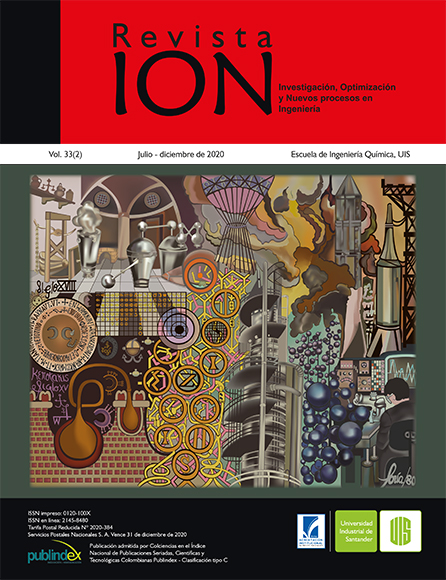Application of fluidifiers as viscosity reduction agents to improve Colombian heavy crude oil production
Published 2020-11-12
Keywords
- Artificial lift systems,
- Production Optimization,
- Viscosity Reduction,
- Fluidifiers,
- Heavy Crude Oil
How to Cite

This work is licensed under a Creative Commons Attribution 4.0 International License.
Abstract
At least 50% of Colombia’s production is heavy crude oil. This crude oil is usually produced through water emulsions in oil showing an apparent viscosity greater than its actual viscosity. Due to the result of this increase, constraints are generated through the flow lines, thus decreasing fluid production. As an alternative solution, the implementation of fluidifiers (viscosity reduction agents) is proposed.
This case study starts from the basic characterization of two fluid samples supplied by two operating companies, 12 and 18 °API crudes, with emulsified water percentages of 20% and 0.2% respectively. The performance of fluidifier additives designed for these specific cases was evaluated in the laboratory, at various temperature conditions, to simulate field conditions and thus define the best fluidifier additive for application in the production system.
Smart Fluid has successfully tested its fluidifier additives in heavy oil-producing wells with different artificial lift systems, obtaining important results of viscosity reduction from treated fluids. For this case report, the cases analyzed are set as BES01 and UBH02, at actual field conditions were found reductions in viscosity between 20 and 40%; wellhead pressure of 45%; pressure losses in the collection system of 89%; and %BSW of 50%. Thus, contributing increases in the production of wells, reduction of the energy consumption of the artificial lift systems, and improvements in the crude dewatering process, thus demonstrating the effectiveness of the technology to fulfill its purpose
Downloads
References
[2] Disclaim C. World Oil Review 2019 (sitio en internet). Eni SpA. Disponible en: https://www.eni.com/assets/documents/documents-en/WORLD-OIL-REVIEW-2019-Volume-1.pdf. Acceso 2020.
[3] Ghloum E, Rashed A, Al-Jasmi A, Al-Ali A, Mali P, Sanyal A. Selection of suitable viscosity reducer to facilitate test production of heavy oil and deep reservoir. In SPE Kuwait Oil and Gas Show and Conference; 2015 oct 11-14. https://doi.org/10.2118/175312-MS
[4] Kokal SL. Crude Oil Emulsions: A State-Of-The-Art Review. SPE Prod. Facil. 2005;20(01):5-13. https://doi.org/10.2118/77497-PA
[5] Fakher S, Imqam A, Wanas E. (2018, December 10). Investigating the Viscosity Reduction of Ultra-Heavy Crude Oil Using Hydrocarbon Soluble Low Molecular Weight Compounds to Improve Oil Production and Transportation. In SPE International Heavy Oil Conference and Exhibition; 2018 dic 10-12; Ciudad de Kwuait, Kwuait. http://doi.org/10.2118/193677-MS
[6] Allenson SJ, Yen AT, Lang F. Application of Emulsion Viscosity Reducers to Lower Produced Fluid Viscosity. Offshore Technology Conference; 2011 oct 4-6; Rio de Janeiro, Brasil. http://doi.org/10.4043/22443-MS
[7] Ferreira SR, Oliveira AP, Pucciarelli N, Tooge CAB, Souza R. Green Products for Reducing the Viscosity of Heavy Oil. Society of Petroleum Engineers; 2014 sep 24-26; Medellin, Colombia. http://doi.org/10.2118/171082-MS
[8] Browne GE, Hass GR, Sell RD. Downhole Emulsification: Viscosity Reduction Increases
Production. Journal of Canadian Petroleum Technology. 1996;35(04). http://doi.org/10.2118/96-04-02
[9] Shuler PJ, Tang Y, Tang H. Heavy Oil Production Enhancement by Viscosity Reduction. In SPE Western Regional Meeting; 2010 may 27-29; California, EE. UU. http://doi.org/10.2118/132564-MS
[10] Society of Petroleum Engineers. The SI Metric Standard System of Units and SPE METRICS STANDARD. United States: Society of Petroleum Engineers; 1982.

